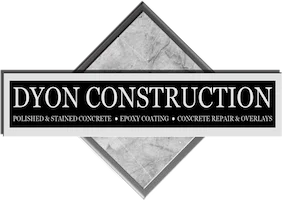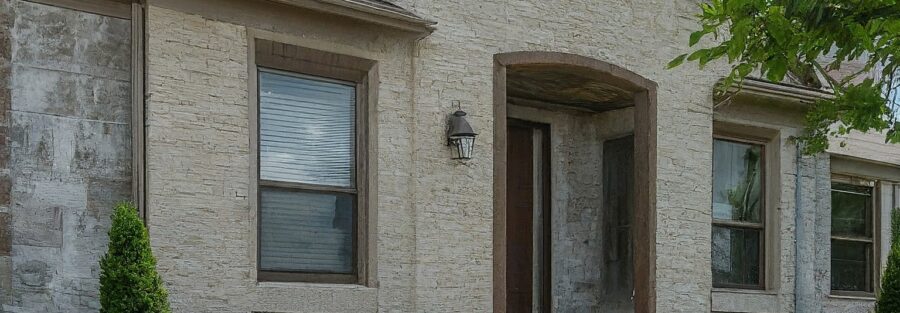Concrete surfaces are known for their durability, but even the most robust materials can degrade over time. Cracks, spalling, and general wear and tear can leave your concrete looking less than ideal. When faced with damaged or aging concrete, there are two primary ways to restore its appearance and functionality: resurfacing or complete replacement. Both methods offer distinct advantages, but choosing the correct one depends on the extent of the damage and your specific needs. Making the right choice can save you both time and money while enhancing the aesthetics and longevity of the surface.
Overview of Concrete Resurfacing
Concrete resurfacing is an increasingly popular solution for repairing worn or lightly damaged concrete surfaces without the need for extensive demolition. This process involves applying a thin layer of new material, typically a concrete overlay or specialized resurfacing compound, directly over the existing surface. The result is a smooth, revitalized appearance that can transform old, cracked, or stained concrete into a like-new finish.
Resurfacing is ideal when the underlying structure of the concrete is still sound, but superficial imperfections such as minor cracks, surface wear, or discoloration are evident. The process generally involves cleaning and prepping the old surface, filling any small cracks or pits, and then applying the resurfacing material. This approach not only restores the aesthetic appeal of the concrete but also provides additional protection against future wear.
One of the key benefits of resurfacing is its cost-effectiveness. Resurfacing is far less labor-intensive than full replacement, as it avoids the need for tearing out the old concrete and hauling it away. This significantly reduces both material and labor costs, making it an attractive option for homeowners and businesses looking for a budget-friendly solution.
Another advantage is the aesthetic versatility of resurfacing. Modern resurfacing materials can be customized with various colors, textures, and patterns, allowing for a completely transformed look. Whether you want a sleek, smooth finish or a decorative design that mimics natural stone or brick, resurfacing can achieve a wide range of visual effects.
However, resurfacing is not always the ideal solution. It is most effective when the damage is relatively superficial. If the underlying concrete has structural issues, such as deep cracks or severe erosion, resurfacing may only serve as a temporary fix, and the problems could resurface over time.
Overview of Concrete Replacement
Concrete replacement, as the name suggests, involves completely removing the old, damaged concrete and installing a brand-new slab. This is a more extensive process, but it is often necessary when the damage is too severe for resurfacing to address effectively. Large cracks, significant spalling, or compromised structural integrity are clear indicators that replacement is the more suitable option.
The process of replacing concrete begins with the demolition of the existing slab, which is typically broken up using heavy equipment and then hauled away. Once the old concrete is removed, the site is prepared for the installation of new concrete. This may involve leveling the ground, reinforcing it with rebar or wire mesh, and then pouring fresh concrete. After the new slab is poured, it must cure for several days to ensure optimal strength and durability.
While concrete replacement is a more labor-intensive and time-consuming process, it offers certain advantages that resurfacing cannot match. First and foremost, replacement guarantees that any underlying structural issues are fully addressed. If the concrete has been damaged by shifts in the ground, freeze-thaw cycles, or extensive use, replacing the slab ensures that the new surface will be built to withstand these forces more effectively.
In terms of longevity, replacement typically provides a more durable and long-lasting solution. A new concrete slab, when properly installed, can last for decades with minimal maintenance, making it an excellent investment for areas that see heavy traffic or extreme environmental conditions. However, this durability comes at a cost, as replacement is significantly more expensive than resurfacing due to the added labor, materials, and disposal fees.
Cost and Durability Comparison
When it comes to choosing between resurfacing and replacement, cost is often one of the most decisive factors. Concrete resurfacing can cost a fraction of what replacement would, making it an appealing option for those working within a tight budget. Resurfacing typically ranges between $3 to $10 per square foot, depending on the complexity of the design and the materials used. In contrast, concrete replacement can cost anywhere from $8 to $15 per square foot, or more, particularly if extensive site preparation or reinforcement is needed.
Beyond initial costs, it is essential to consider long-term durability and maintenance. Resurfaced concrete can last for several years, particularly in low-traffic areas, but it is not as durable as a completely new slab. Over time, resurfacing materials can wear down, especially if they are subjected to heavy traffic, extreme weather, or chemical exposure. Regular maintenance, such as sealing and cleaning, can help extend the lifespan of resurfaced concrete, but in areas that experience significant wear, resurfacing may need to be repeated more frequently.
On the other hand, a fully replaced concrete slab offers superior durability, particularly in high-traffic or industrial environments. With proper installation and maintenance, replacement concrete can last up to 30 years or more. The longevity of replacement makes it a worthwhile investment for driveways, sidewalks, and commercial spaces that must endure constant use.
It’s also important to consider environmental factors when deciding between resurfacing and replacement. Resurfacing generates less waste, as the old concrete remains in place, and fewer resources are used. This makes it a more environmentally friendly option for those looking to reduce their carbon footprint. Replacement, while more resource-intensive, can also be done with sustainable practices, such as recycling the old concrete for use in other construction projects.
Conclusion
When faced with damaged or aging concrete, the decision between resurfacing and replacement depends on several key factors: the extent of the damage, the desired longevity of the solution, and the budget available. For surfaces with minor cosmetic issues or light cracking, concrete resurfacing offers an affordable, efficient, and aesthetically flexible solution. It can quickly refresh the appearance of old concrete and add years to its lifespan without the need for extensive demolition.
However, for concrete with deeper structural issues or extensive wear, full replacement is often the better option. While more costly upfront, replacement provides a stronger, more durable solution that can last for decades, ensuring that your concrete can withstand the rigors of time, weather, and heavy traffic.
Ultimately, the right choice will depend on the condition of the concrete in question and the specific needs of the space. Consulting with a professional can help determine whether resurfacing or replacement is the most appropriate course of action for your project, ensuring that your concrete surface remains functional, beautiful, and long-lasting.

